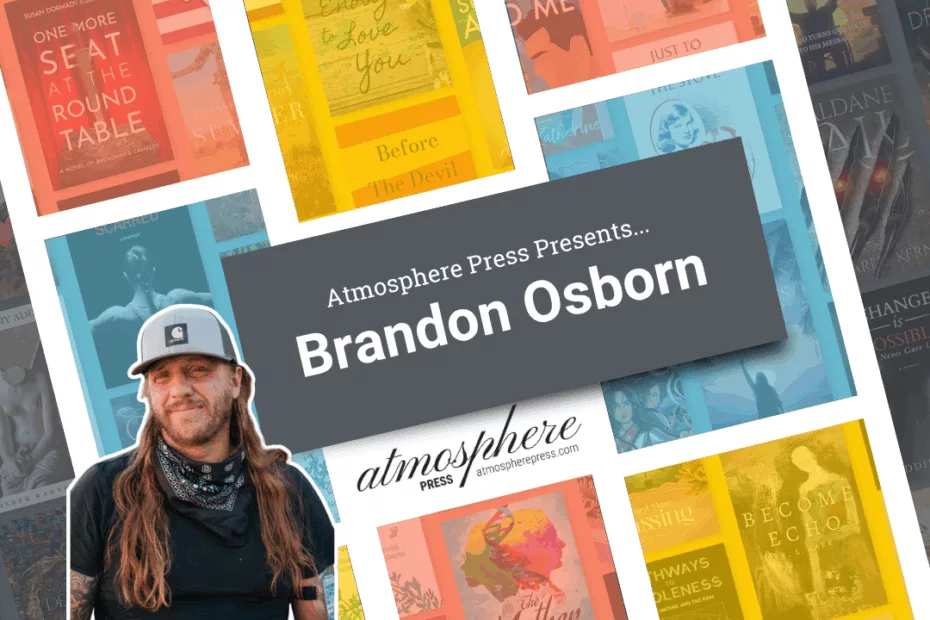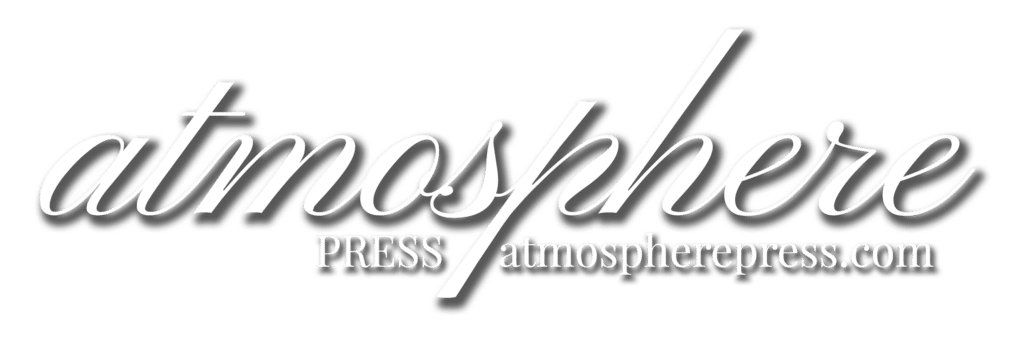An Interview with Brandon Osborn

Brandon Keith Osborn is a filmmaker, photographer, and storyteller based in Los Angeles. After years of visual storytelling through commercial and documentary work, he began developing long form narratives that blend grounded sci-fi, philosophical inquiry, and emotionally raw character arcs. His debut novel, The Panatharta Chronicles: Shadow Falls, was accepted for publication in 2025, though he later decided to pursue a broader creative rollout—including cinematic development and agency representation.
Brandon is also the founder of For Reel Life, a media company focused on authentic storytelling across mediums, and is currently in production on two feature-length intellectual properties, including the emotionally charged sci-fi thriller In Dreams Bears Fruit.
He believes good stories ask hard questions, and great ones refuse to answer them neatly.
Who/what made you want to write? Was there a particular person, or particular writers/works/art forms that influenced you?
Storytelling has been in my blood from the start. My mother was an English professor who worked her way through a master’s degree while raising me. She’s retired now, but still my best beta reader. Looking back, the first real moment I felt creative power was in 5th grade. We were asked to reimagine a classic tale, so I rewrote The Night Before Christmas from the perspective of the mouse that wasn’t stirring. I made him grouchy and wrote the line, “after hours of wide-awake sleeping.” My teacher was blown away. That little piece got published in the local newspaper, which to a 5th grader felt like the Pulitzer.
As I grew up, I gravitated toward stories of adventure, rebellion, and internal conflict. Books like Catcher in the Rye, Heart of Darkness, and Into the Wild fed my imagination and gave structure to what I felt but couldn’t name yet.
When my college athletic career didn’t pan out, I went through a rough patch. But I found a camera and I never put it down. In early-2000s Seattle, all my friends were musicians, so I started shooting 35mm film at shows, backstage, and everywhere in between. I built a career around that, photographing acts like Tom Petty, Queens of the Stone Age, Foo Fighters, and eventually fashion events like Seattle International Fashion Week.
That’s when my mom made a sly move. She told me about Art Center College of Design and said I’d never get in. Out of spite, I applied. And I got in.
There, I fell in love with Nick Knight, Guy Bordin, Kubrick, classical art, Caravaggio, and visual storytelling on a deeper level. When the Canon 5D Mark II dropped with video capability, I was all in. I started making moving portraits and short-form visual pieces that landed me a gig shooting behind-the-scenes for The Hollywood Reporter’s cover stories. It made me want to tell bigger stories. Stories that stuck.
After 20 years in the industry, I realized I’d put in my 10,000 hours. Writing felt like the next evolution of my craft. I wrote The Panatharta Chronicles: Shadow Falls in about three months. In Dreams Bears Fruit followed soon after and I’m nearly finished with that one, all within the last six months.
So to answer the question simply: I became a writer through storytelling. The medium changed, but the intent never did.
What inspired you to start writing this book?
I think it began when I quietly decided to change my life and finally tap into the potential I’d spent years circling. I didn’t sit down with a plot or outline. I just started writing character sketches, trying to channel something honest.
The first spark came from my daughter, who is only three years old. I imagined what she might grow into one day. Curious, fierce, rebellious in the best way and built the lead character around that projection. Her name is Io, which is both a volcanic moon of Jupiter and my daughter’s initials: Isabella Osborn.
From there, I wrote her parents. The mother, Jacquirra, is a reflection of my wife, Jacquelyne. The father, Ozen, comes from my own nickname—Ozzie, or just Oz. Those three characters quickly became the emotional core of a much bigger story. What started as a simple family dynamic blossomed into a fully formed universe.
It grew faster than I expected. But looking back, it feels like the story had been waiting patiently for me to finally sit down and write it.
Tell us the story of your book’s title. Was it easy to find, or did it take forever?
The title actually grew out of the universe itself. Early on, I had this vision of twelve unique planets, each formed from the catastrophic destruction of a single, massive world. I wanted the science to feel plausible, so I drew inspiration from a NASA interview I once heard. A scientist was sending a probe to Jupiter’s moon to test the water beneath the ice for signs of life. A child asked her, “Would the fish taste like our fish?” And her answer stuck with me: “We don’t know. Their chemical and genetic makeup would be entirely unique to that environment.” That idea lit the fuse.
In my world, each of the twelve planets developed its own biology, chemistry, and evolution. Its own relationship with sentience. That’s how the anthropomorphic species in Panatharta emerged. Not as fantasy tropes, but as unique byproducts of planetary divergence.
The name “Panatharta” came later. I’ve always been drawn to mythology, especially Greek, so “Pan” meaning “all” felt fitting. “Atharta” is a blend of words like “terra” and “hearth” a nod to the idea of a shared homeworld shattered and scattered. Together, it became Panatharta or all the earths, all the worlds, all the peoples.
Some of the names in the book also carry personal and cultural weight. Kitachie, for instance, the youngest daughter in the story, is inspired by the phonetics and rhythm of Pacific Northwest Native languages, as is the name Tse’Sou. Building the world meant honoring the voices that shaped mine.
If your book had a soundtrack, what are some songs that would be on it?
The book “is” the soundtrack.
Every chapter title is a nod to the music that raised me—hip-hop, punk, glam metal, classic rock, and even a few deep cuts that only hit if you really know your vinyl. You’ll catch references to Mobb Deep (“Shook Ones”), Metallica (“Ride the Lightning”), Mötley Crüe (“Kickstart My Heart”), Guns N’ Roses (“Welcome to the Jungle”), and Bob Marley (“Redemption Song”). There’s “Killing Me Softly” as performed by Lauryn Hill with The Fugees, and a Simon & Garfunkel deep cut (“Baby Driver”) that fits a scene so well it feels scored.
It’s a rock opera on paper. A mixtape for the imagination. Some scenes feel like they should be blasted through a car stereo at midnight. Others land like a scratched record in an empty room.
If you’re the kind of reader who hears music while they read, this book’s got its own rhythm built in. I didn’t just write it…I scored it.
What other professions have you worked in? What’s something about you that your readers wouldn’t know?
To quote Wayne’s World: “I have an extensive collection of name tags and hairnets.”
I’ve done just about every job you can think of—longshoreman, bartender, industrial landscaper. I’ve worked 12-hour days behind cameras and 12-hour days behind shovels. I spent two seasons as the Director of Creative Video for UCLA Women’s Basketball, and during the pandemic, I lived and worked on a ranch.
I camped on the property, cleared trails with a tractor and chainsaw, helped turn the place into a glamping destination, and took care of goats, ducklings, and even stared down a bobcat once. I was a lift operator in Washington and Utah for a few seasons, mostly to feed my snowboarding addiction. It wasn’t glamorous, but it was freedom, and that always fed the storyteller in me.
I think readers might be surprised to know how much of my writing comes from real work and real dirt. The best stories aren’t always imagined…They’re earned.
What books did you read (for research or comfort) throughout your writing process?
This might surprise people, but most of what inspired me had nothing to do with sci-fi.
Max Bennett’s A Brief History of Intelligence cracked my brain open. It reframed how I thought about the mind—how we evolved not just to process information, but to feel our way through it. That was huge for me as I wrote about AI and consciousness.
I also found a lot of comfort in writers like Malcolm Gladwell and David Sedaris—not because of the subject matter, but because of how they tell stories. Gladwell teaches you to connect unexpected dots. Sedaris reminds you that vulnerability and wit can coexist on the same page. They both helped me unlock my imagination in ways I didn’t expect.
So while my book might sit on the sci-fi shelf, the roots of it stretch all over the place.
What advice would you give your past self at the start of your writing journey?
Honestly? I’d say buckle up. It’s a difficult time for storytellers. We’re living in an age where some of the most brilliant minds authors, teachers, creatives are being undervalued, while jobs requiring no imagination pay better and demand less.
But I’d also say not to let that discourage you. The cream rises. If you tap into that space where raw potential turns into refined ability where your voice starts speaking loud enough to hear through the noise someone will notice. Maybe not right away, maybe not loudly, but they’ll feel it. And that’s the thing about great stories. They don’t need permission to matter.
What’s one thing you hope sticks with readers after they finish your book?
Honestly? I don’t know. And I’m okay with that.
I didn’t write it with a moral in mind. I wrote it because I had something big and messy and sharp stuck in my chest, and this was the only way to get it out. If someone finishes it and feels anything—confused, inspired, fired up, wrecked—that’s enough. If they just want the next one? Even better.
I’m not here to preach. I’m here to build a world and ask real questions. What sticks with you is up to you. Building a whole universe and filling it with raw, real characters sounds impossible.
Until it isn’t.
Are you a writer, too? Submit your manuscript to Atmosphere Press.

Atmosphere Press is a selective hybrid publisher founded in 2015 on the principles of Honesty, Transparency, Professionalism, Kindness, and Making Your Book Awesome. Our books have won dozens of awards and sold tens of thousands of copies. If you’re interested in learning more, or seeking publication for your own work, please explore the links below.
